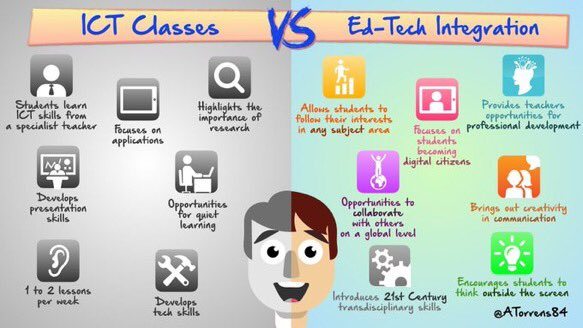
Fostering Modern Educational Practices with EdTech Integration Models
In the rapidly evolving landscape of education, the integration of educational technology (EdTech) has become a cornerstone of modern teaching and learning. Let’s explore various EdTech integration models that are shaping contemporary educational practices.
1. Substitution Model: The Starting Point
The substitution model represents the initial step in EdTech integration. In this model, technology is used as a direct substitute for traditional teaching methods. For example, textbooks are replaced with digital versions, and chalkboards are substituted with interactive whiteboards. While this model provides a familiar entry point for educators, its transformative impact is limited.
2. Augmentation Model: Enhancing Learning Experiences
Moving beyond substitution, the augmentation model focuses on enhancing learning experiences through technology. Tools and apps are integrated to improve efficiency and offer added functionalities. For instance, collaborative online platforms augment traditional group projects, providing students with enhanced collaboration and communication tools. The augmentation model aims to amplify the impact of technology on teaching and learning.
3. Modification Model: Redefining Tasks
The modification model goes a step further by redefining learning tasks. In this model, technology enables significant task redesign, allowing for more creative and engaging activities. For instance, instead of a traditional research paper, students might create multimedia presentations or collaborative digital projects. The modification model encourages educators to explore innovative ways of leveraging technology to redefine learning tasks.
4. Redefinition Model: Transforming Education
At the pinnacle of EdTech integration, the redefinition model transforms education by creating new possibilities that were previously inconceivable. This model transcends traditional boundaries and enables activities that were not feasible without technology. Virtual reality field trips, global collaborative projects, and real-time data analysis exemplify the redefinition model’s transformative impact, fostering a new era of interactive and immersive learning.
5. SAMR Framework: A Guiding Structure
The Substitution, Augmentation, Modification, and Redefinition (SAMR) framework serves as a guiding structure for educators navigating the integration journey. SAMR provides a framework to evaluate the depth of technology integration, helping educators move beyond mere substitution towards more transformative uses of technology. It encourages thoughtful consideration of how technology can truly enhance learning outcomes.
6. TPACK Framework: Integrating Pedagogy and Content Knowledge
The Technological Pedagogical Content Knowledge (TPACK) framework emphasizes the integration of technology, pedagogy, and content knowledge. Educators utilizing the TPACK framework understand the interplay between these three domains, ensuring that technology is seamlessly woven into instructional strategies and aligned with specific learning objectives. TPACK promotes a holistic approach to EdTech integration.
7. Blended Learning Models: Combining Online and In-Person Instruction
Blended learning models combine traditional face-to-face instruction with online learning components. This approach provides flexibility, allowing students to engage with content both in the classroom and remotely. Various models, such as the flipped classroom and rotational models, offer a balanced integration of technology, fostering personalized learning experiences.
8. Flipped Classroom Model: Shifting the Learning Paradigm
The flipped classroom model reverses the traditional learning paradigm. Students engage with instructional content at home through online videos and materials, while classroom time is dedicated to collaborative activities, discussions, and hands-on learning. This model promotes active student participation and allows educators to focus on individualized support.
9. Station Rotation Model: Personalizing Learning Paths
The station rotation model personalizes learning paths by dividing class time into different stations, each offering a unique learning experience. Technology is strategically integrated into various stations, providing opportunities for online research, interactive simulations, and collaborative projects. This model accommodates diverse learning styles and paces.
10. Professional Development Models: Empowering Educators
Incorporating technology effectively requires ongoing professional development for educators. Various models, such as the TPACK-based PD model and collaborative learning communities, empower educators to enhance their technological proficiency and integrate EdTech seamlessly into their teaching practices.
Exploring EdTech integration models is a critical step for educators aiming to leverage technology effectively. For comprehensive insights and resources on EdTech Integration Models, visit EdTech Integration Models. Empower yourself to foster modern educational practices and enhance the learning journey for students in the digital age.



